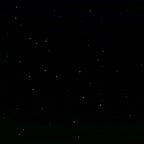Caught in the Webb!
Nearly 7-and-a-half months after its Christmas Day Launch, the James Webb Space Telescope has sent in its first captures. Check them out here!
Published in
Jul 13, 2022
After nearly twenty years of development and more than half a year past its launch, NASA has finally released the first images captured by James Webb Telescope. The full-color images were released along with spectrographic data for these images, with President of the United States, Joe Biden, himself releasing the first image to the media.
Get a look at the images below.
